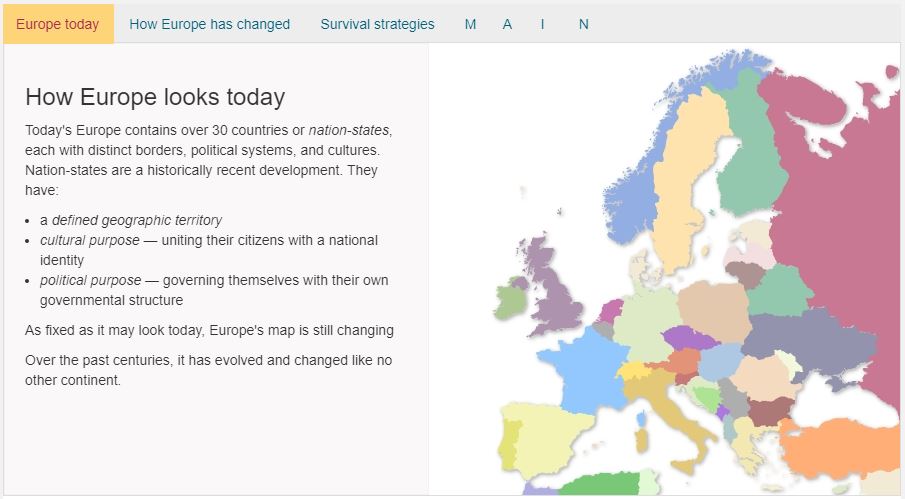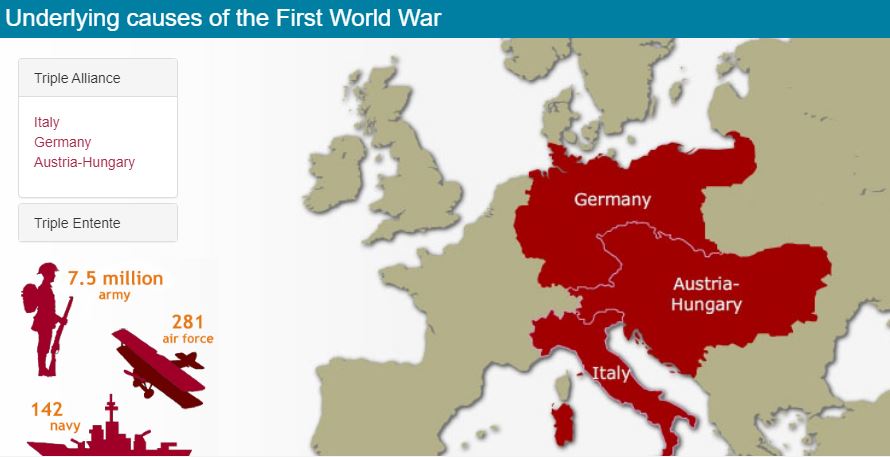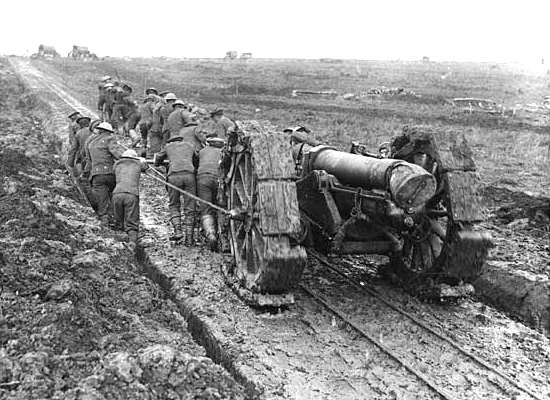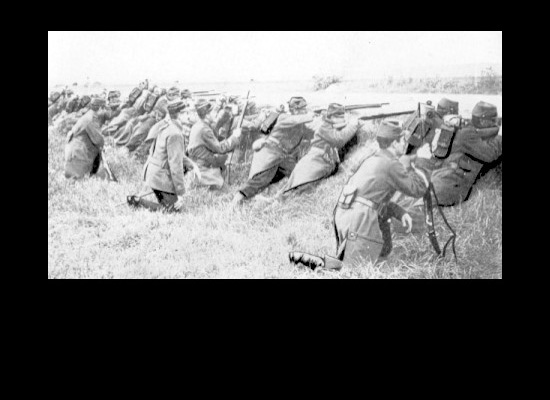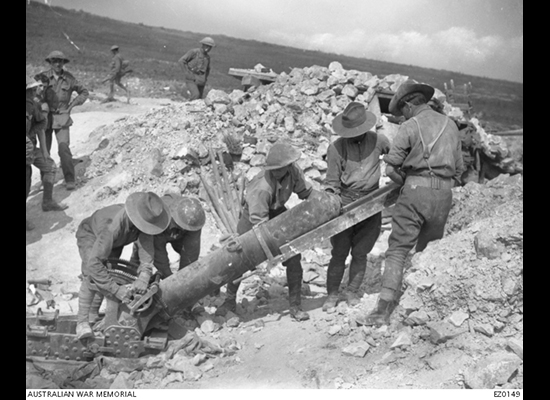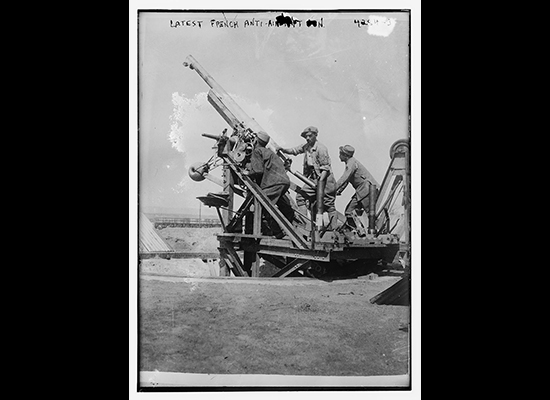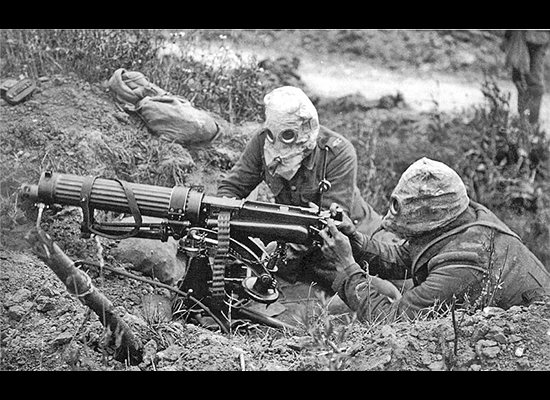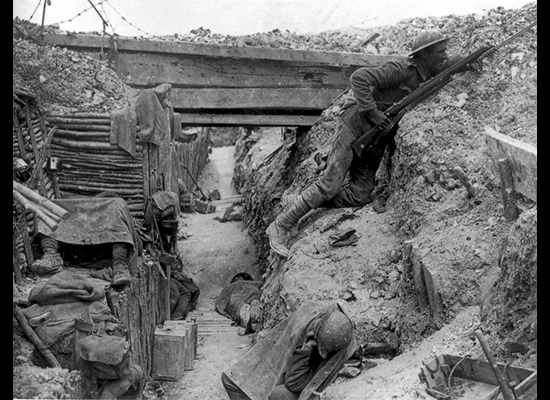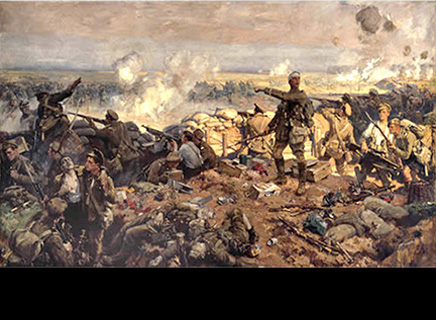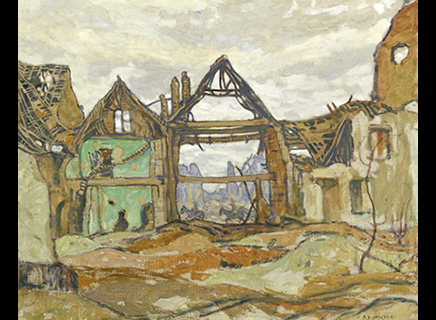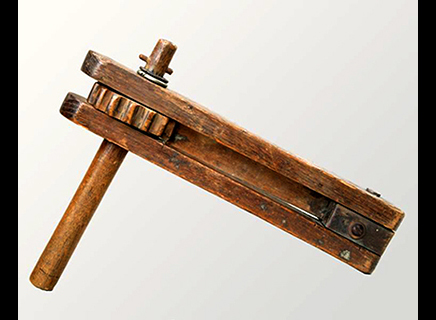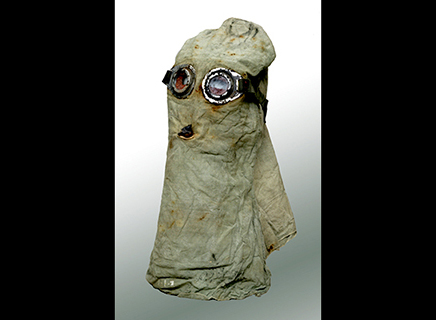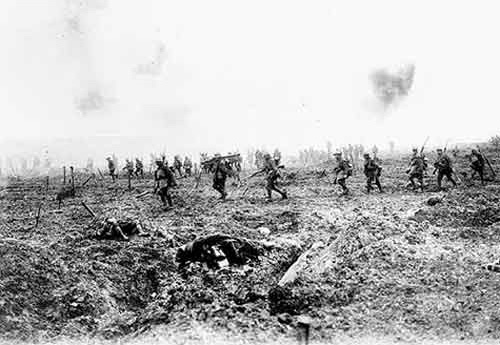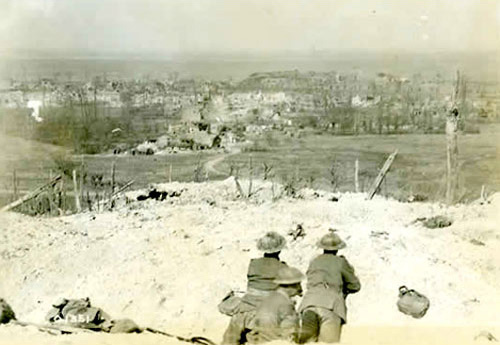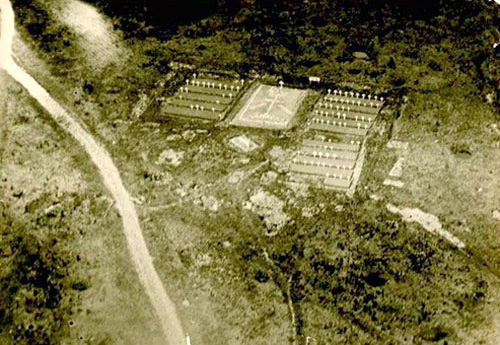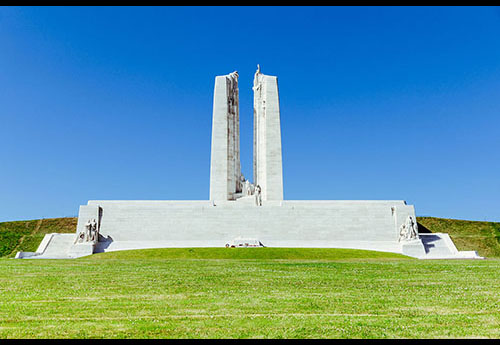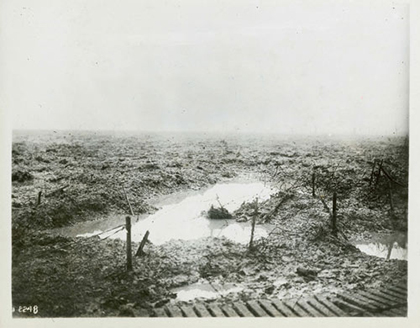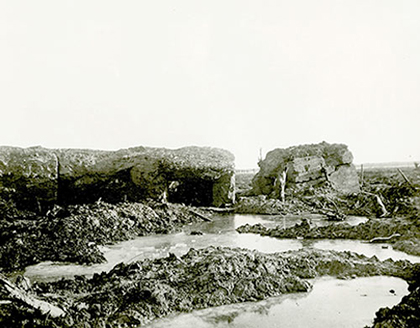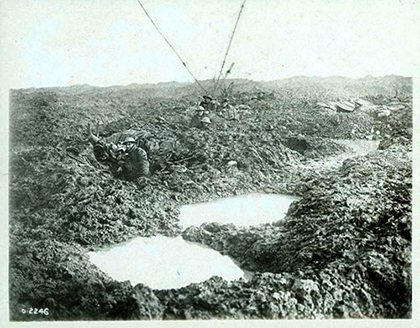Course introduction
The past is to be respected and acknowledged, but not to be worshipped. It is our future in which we will find our greatness.
Welcome to CHC2D-F, The Independent Learning Centre’s Grade 10 course in Canadian history from 1914 to the present.
In this course, you will learn how Canada has changed over the last hundred years.
Acknowledgements (Opens in new window)
In 1914, Canada was part of the British Empire. As the 20th century progressed, Canada had to face many difficult tests: two world wars, the Great Depression, the Cold War, and numerous political, social, and economic crises. On the world stage, Canada earned a reputation as a strong independent nation.
At home, Canada was working on defining its goals and refining its identity.
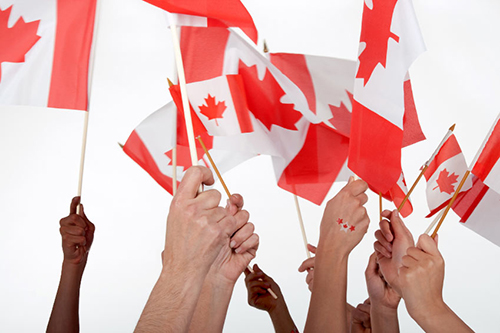
As you study Canada’s past, you’ll start to see how it became the country you live in today – a country ranked among the best in the world in which to live, whose values are described beautifully in former Prime Minister Diefenbaker’s Canadian Bill of Rights.
I am a Canadian, free to speak without fear, free to worship in my own way, free to stand for what I think right, free to oppose what I believe wrong, or free to choose those who shall govern my country. This heritage of freedom I pledge to uphold for myself and all.
Overview
In this course, you’ll explore the social, economic, and political developments and events that took place in Canada since 1914, and you’ll see how they impacted the lives of different groups in Canada. You’ll look at the role of conflict and cooperation in Canadian society, at Canada’s evolving role within the global community, and you’ll learn about the impact of various individuals, organizations, and events on Canadian identity, citizenship, and heritage.
The time span from 1914 to present day has been divided into four periods: 1914–1929; 1929–1945; 1945–1982; and 1982 to the present. Each period will be studied in turn using the historical inquiry process and historical thinking concepts.
Historical thinking concepts
When you study history, what knowledge will you gain and what will you be able to do?
Of course you will learn some facts; but you will also learn how to approach and understand history in ways you are probably not yet familiar with. You will learn how to use historical thinking concepts.
What are historical thinking concepts? They are thinking concepts which form the structure of the practice of history and which will help you develop the skills and abilities you need to “think historically.”
Once you learn how to use these concepts, you will be able to
- establish historical significance – look at why we care today about certain events, trends, and issues in history
- analyze cause and consequence – examine how and why certain conditions and actions led to others
- identify continuity and change – describe what has changed and what has remained the same over time
- take a variety of historical perspectives – understand the past from the perspective of the past; see the “past as a foreign country” with different social, cultural, intellectual, and emotional contexts that shaped people’s lives and actions.
These historical thinking concepts will expand your approach to the study of history. Instead of accepting or compiling what others have to say about history, you’ll be able to form your own opinions and to assess the claims of others based on evidence.
When you can apply historical thinking concepts to real events, you will become more actively engaged in the study, practice, and interpretation of history. The research, analysis, interpretation, and presentation skills you will develop through this approach will become tools you can extend, develop, and use in all areas of study and in other aspects of your life.
You will develop and strengthen other transferable skills in this course. These pertain to research and communication. You’ll learn how to ask insightful research questions, develop a thesis statement, find reliable sources, gather relevant evidence, use the recommended writing style, document your sources in acceptable formats, and effectively communicate results.
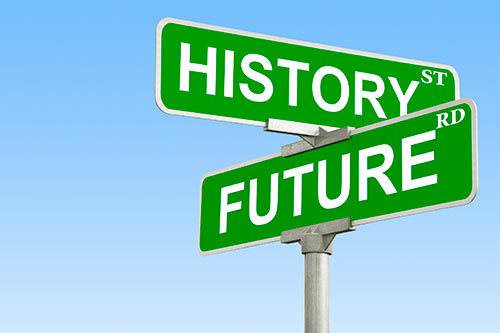
Note
Please note that we will be using the Chicago style of citation throughout the course. You will only be introduced to the style of citing sources in learning activity 1.5, but we have decided to adopt this style throughout the course for consistency and clarity.
What you will learn
After completing the course, you will be able to
- use the historical inquiry process and the concepts of historical thinking when investigating aspects of Canadian history since 1914
- apply skills developed through historical investigation in other fields of study and in various aspects of everyday life
For the four time periods under study: 1914–1929; 1929–1945; 1945–1982; 1982 to the present, you’ll be able to
- describe key social, economic, and political events, trends, and developments and assess their significance for different groups in Canada
- analyze key interactions within and between different communities in Canada, and between Canada and the international community, and explain how they affected Canadian society and politics
- explain and analyze how significant events, individuals, groups, and organizations, as well as specific social changes have contributed to the development of identity, citizenship, and heritage in Canada
World War I in Europe
Introduction
The First World War was a global conflict that involved many nations around the world and caused tremendous damage and change.
When the war began in 1914, Canada was already a nation, but to most of the world, it was still just one dominion of the huge and powerful British Empire.
The conflict grew and continued for four long years, from 1914 to 1918.
At the time, it was known as The Great War or The War to End All Wars. Over 30 million soldiers and seven million civilians were killed or wounded during the war. By the time it was over, it had spanned over three continents.
In this learning activity, you will learn about what caused it, how it developed, where it took place, what it was like, how Canadians took part, and why it is still significant today.
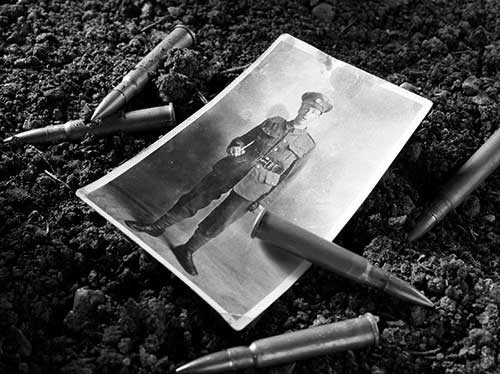
What you will learn
After completing this learning activity, you will be able to
- use historical thinking concepts such as historical significance, historical perspective, cause and consequence, and change and continuity to analyze and evaluate evidence, and formulate conclusions about historical events of this time period
- develop questions to guide your investigations into issues and events in Canadian history since 1914
- explain the main causes of the First World War and how Canada became involved
- describe Canada’s contributions to the war and analyze the significance of Canada’s military participation
This was an important period in Canada’s history and in Canada’s evolution toward becoming an independent nation that makes its own decisions, both domestically and internationally.
Europe’s history of conflict
It started with a violent act that set off a chain of reactions, and suddenly, the world was at war.
It’s easy to identify the event that set the war in motion, but the root causes are deeper and more complex. Even today, those causes are still being debated, and consequences still being felt. Taking a look at where it started and who was involved will give you some insight into the causes.
Europe now and then
Most countries in Europe were using a combination of defensive and offensive strategies to try to avoid conflict with their neighbours early in the 1900s. However, these strategies were not effective in preventing war. Instead, they actually contributed to the outbreak and expansion of World War I.
What caused the war?
The immediate or short-term cause of World War I was the assassination of the Archduke Franz Ferdinand on June 28, 1914. This was the spark that started the fire that grew into World War I.
How did this one event start a war that grew into a global conflict, lasted four years, and changed the Western world forever? Take a look at some of the underlying causes.
In 1914, there was a delicate balance of power in Europe.
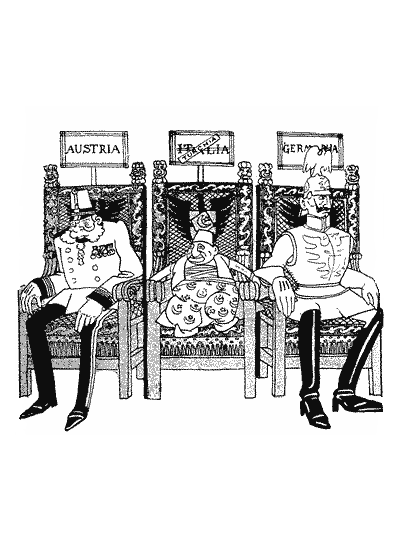
On one side were the empires of Germany and Austria-Hungary. Italy was allied with these two, but initially remained neutral.
They were known as the Triple Alliance or Central Powers.

On the other side, were Great Britain, France, and the Russian Empire.
These nations did not have a formal military alliance, but had agreed to work together if one of them was threatened.
They were known as the Triple Entente.
Both alliances were based on defensive agreements; that is, if one country was attacked, its allies would help defend it. Numerous other smaller alliances and defensive pacts were also in place. Two of those pacts played key roles in the outbreak and expansion of the war:
- Great Britain was committed to protect the neutral country of Belgium if it were attacked.
- Russia was committed to support the mostly Slavic country of Serbia.
These alliances were supposed to reduce the risks of war. However, in reality they increased the risks, and once the war started, they accelerated it into a global conflict.
Underlying causes
To see how this happened, take a closer look at the alliances listed below. Click the slider to switch between alliances. You can click on each country in an alliance to examine its status in 1914 and how it was applying the MAIN strategies discussed earlier (Militarism, Alliances, Imperialism, and Nationalism).
Immediate cause of the First World War
The immediate cause of the First World War was a shooting in Bosnia. Archduke Franz Ferdinand, heir to the Austro-Hungarian throne, and his wife Sophie were visiting Sarajevo, the capital of Bosnia on June 28, 1914, when they were shot dead by a young Serbian, a member of the Serbian nationalist movement called the Black Hand.
Why were they shot?
Franz Ferdinand was next in line to the throne, and the reigning emperor was quite old. Franz Ferdinand wanted to “fold” Serbia into the Austro-Hungarian Empire, an idea vehemently opposed by young Serbian radicals, who wanted to create their own united Serbian state.
The Black Hand thought that eliminating the archduke would help their cause; and they carried out the plan with some difficulty.
If you’re interested in seeing exactly what happened that day, go online and search for “Map as history,” and “assassination in Sarajevo.”
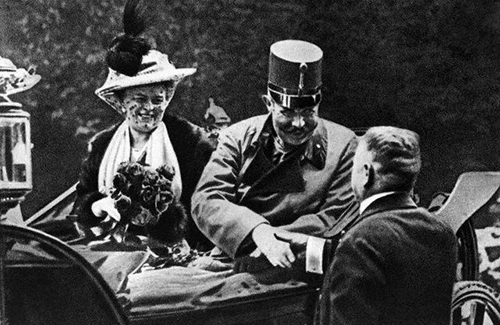
Archduke Franz Ferdinand and his wife Sophie arriving in Sarajevo, Bosnia June 28, 1914
A Serbian shot an Austrian.
So why did Germany, Russia, France, and Great Britain get involved in a war?
Take a look at the cartoon pictured here.

The Chain of Friendship
The caption reads: “If Austria attacks Serbia, Russia will fall upon Austria, Germany upon Russia, and France and England upon Germany.”
It is called “The Chain of Friendship,” and shows the web of alliances of World War I. Some think it was first published even before Austria-Hungary declared war on Serbia.
Look closely, read the caption and the thought bubbles. There are some inaccuracies in this account of events. See if you can spot them.
It was published in the American newspaper the Brooklyn Daily Eagle in July 1914.
What inaccuracies did you find?
Not accurate:
France and Great Britain did not attack Germany.
Germany declared war on France; that’s why France entered the war.
Great Britain entered the war to defend Belgium, not Russia.
Accurate:
Austria-Hungary did attack Serbia.
Russia mobilized its army against Austria-Hungary to support Serbia.
Germany did declare war on Russia (but did not immediately attack Russia).
Causes and consequences of the war
One way of looking at history is to consider the causes and consequences of the events that end up making history.
As the authors of the text titled The Big Six Historical Thinking Concepts state, when you look into the causes and consequences of historical events, you begin to discover that the events of history were not inevitable.
Alter a single action or condition, and an event might have turned out differently.
You can test out this theory.
Now that you’ve seen summaries of the long-term and immediate causes of the First World War, do you think the war was inevitable? Was there one single event or action that caused the war?
If you could go back in time and change one thing to prevent the war from happening, what would it be? Make sure you explain your reasoning.
Answers will vary but may include the following:
I’d say that the war would not have happened if Archduke Franz Ferdinand hadn’t been assassinated. If there had been no killing in Sarajevo, things would not have unfolded as they did. On the other hand, I think something else would
probably have started a conflict because the old solutions (leaders, imperialism, militarism, alliances, and nationalistic pride and competition) were not effective any more.
What was it like?
No one anticipated such a long, widespread, and world-changing war. Leaders, soldiers, and people on the street thought it would all be over by the end of 1914, but things did not go as planned, and the war was like nothing anyone had seen before.
Germany had a plan
At the start, Germany was ready for war. They took the initiative and followed a plan that had previously been thought out.
The Schlieffen Plan was a war plan put together in response to the “Dual Alliance” of 1893 between France and Russia. Germany wanted a plan ready if they were ever in a war with the Dual Alliance – being attacked from the west (France) and from the east (Russia) at the same time.
The Schlieffen Plan was designed to eliminate France as an ally to Russia before Russia was ready to attack. It was based on the assumption that Russia would take about six weeks to get its military force together and mobilized after the war broke out. Germany’s plan was to use that lead time, seize the opportunity, immediately focus their forces against France, and defeat them before turning east to fight Russia.
To make swift progress, they’d avoid France’s fortified borders and make an unexpected and forceful strike through neutral Belgium deep into France. The idea was to successfully complete the major attack on the Western Front within the six weeks Russia took to prepare. Then, with France subdued, they would turn east to attack Russia.

The Schlieffen Plan depended on Russia not mobilizing its armed forces quickly, on Great Britain not living up to its obligation to defend neutral Belgium, and on France and Belgium being caught off guard by the unexpected attack through Belgium and not being able to defend themselves against it. If it had gone according to plan, France would have been defeated in a matter of weeks.
But it did not go as planned.
Trench warfare
The Schlieffen Plan didn’t work. Instead, Belgium put up a fight, French troops set up defences, Great Britain and all the British colonies stepped in to defend Belgium, and Russia was ready to go in ten days.
On the Western Front, the opposing forces got bogged down in north-east France and a new kind of warfare emerged. It was called trench warfare. This was an incredibly devastating and demoralizing form of combat that left the participants, the local citizenry, and the surrounding countryside permanently scarred.
How was trench warfare different? In past conflicts, when two big armies met on a battlefield, they attacked each other directly, head-on and face to face. Usually, cavalry (soldiers on horses), infantry (soldiers on foot), and rolling artillery like cannons were used on both sides and the “rules of engagement” were quite clear.
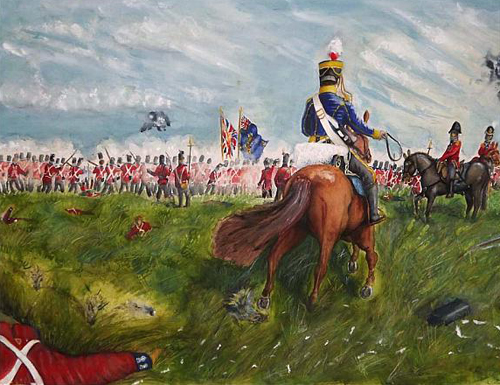
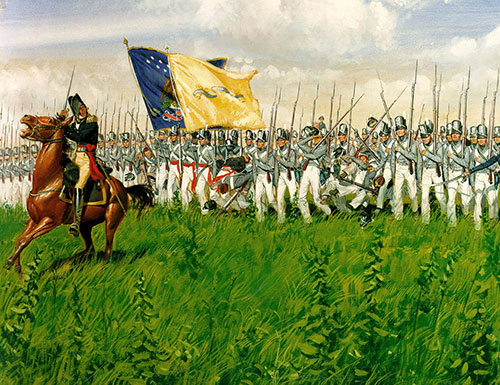
In the Battle of Chippawa in 1814 in Ontario, Canada, for example, armies moved across territory and engaged in battle face to face. Opponents tended to use similar tactics, formations, and weapons. Battle plans were direct and battles lasted for about a day.
Things had changed by 1914. Weapons had advanced. As the war went on, a variety of new explosive devices such as grenades, mines, and mortar shells came into play. Soldiers had more options for shooting from a distance with artillery, repeating rifles, rifles with telescopic sights, machine guns, and other 20th-century weapons. As the conflict continued, tanks, war planes, surveillance balloons, and other new technologies were brought into the war.
The weapons, equipment, and “rules” of war were new and kept changing. Systems of attack, defence, communication, and transportation had to be improvised on the fly. During the course of the war, longstanding 19th-century methods and conventions were replaced through trial and error with 20th-century inventions, and not much about warfare remained the same.
Take a look at this selection of photos from the First World War to get an idea of what conditions, equipment, and weaponry were like and how they changed over the course of the war.
Further research
If you want to know more about trench warfare, conduct some research on the Internet. The history section of the BBC is a reliable source that offers some first-hand accounts of life on the front.
Also, a game has been developed for the BBC to mark the 100th anniversary of the First World War, and the Canadian War Museum also hosts a game based on the real-life experiences of soldiers who fought during the First World War.
Enjoy your search!
What was the Western Front?
As the war went on, systems of trenches, barriers, and bunkers evolved and extended into a continuous line of trenches. The line extended from near Dunkirk in the north, southward to around Lille, then onto the west side of the France-Belgium border, and south to the border of Switzerland. This shifting line formed the “Western Front,” where the two opposing armies met and engaged.
The Germans held this line for some time, taking advantage of most of the important mining and industrial land of France and Belgium during the war. The map that follows shows the line of trenches that made up the Western Front, from 1914 to 1918.
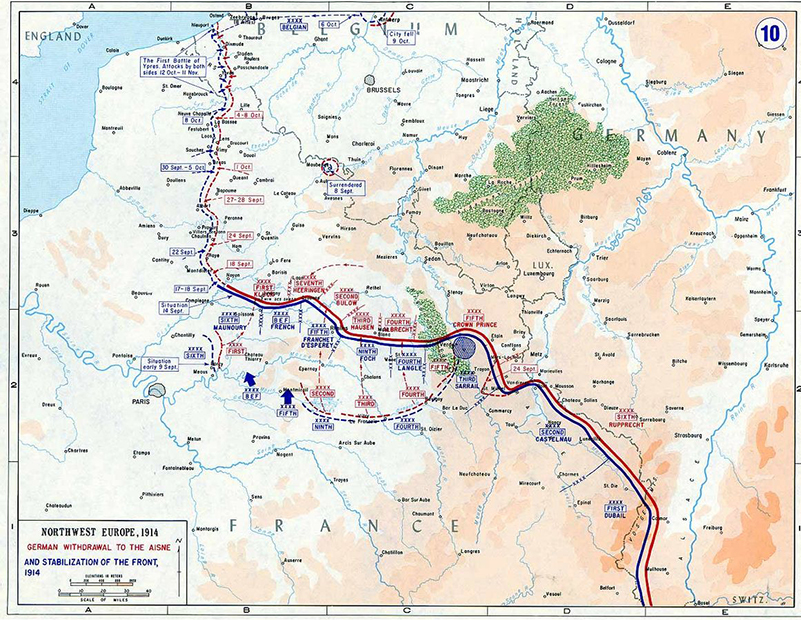
Most Canadian operations took place on the Western Front. The next map highlights the areas along the front where Canadian forces made significant contributions.
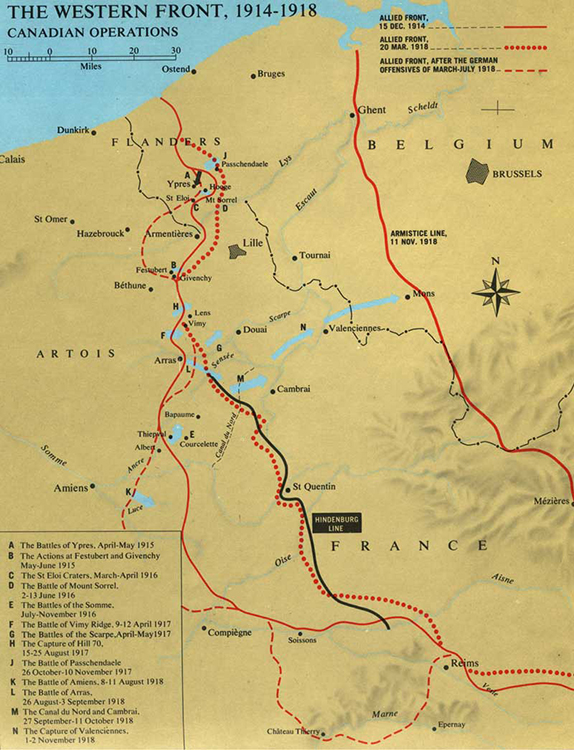
Canada’s role in World War I
Canada took part in World War I from the beginning. Canadian troops fought mainly on the Western Front. They participated in many battles, as can be seen on the Western Front plaque in Currie Hall, Royal Military College of Canada, in Kingston, Ontario.
Were these battles historically significant for Canada? And for the British, French, and colonial allies that fought on the Western Front?
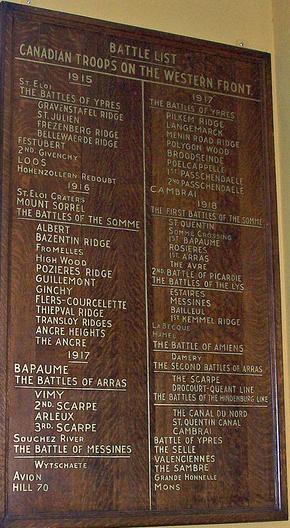
This is a photo of the plaque showing the battles that Canadian troops participated in on the Western Front.
Historical significance
What is historical significance?
Part of the answer can be found in the idea that there is a difference between “history” and “the past.” As historian Ruth Sandwell states, the past is “everything,” but
… history is someone’s attempt to make sense and order out of the chaos of everything-ness.
To make sense of past events, historians sift through them and try to figure out which of them resulted in sizeable change, over long periods of time, for a large number of people. Historians determine historical significance by looking for events that have a lasting impact for many.
When it comes to Canada’s role on the Western Front in World War I, four battles are usually considered to be historically significant.
Four significant battles
Investigating these four key battles should give you an idea of how historical significance is established and you’ll understand why these are the battles remembered in Canada.
The battles you’ll investigate are:
- the Second Battle of Ypres
- the Battle of the Somme
- the Battle of Vimy Ridge
- the Battle of Passchendaele
The locations of these battles have been pointed out on the map of the Western Front shown here.

Guided research
To get the facts about each battle, you’ll do some research. Using suggested sources, you’ll read a short report, look at some images, listen to a recording, visit a website, or watch a video. In most cases, these sources will be provided in this learning activity; in a few cases, you’ll need to search for the source online.
Use the data collection sheet “Why is this battle significant? (Opens in new window)” to record the relevant facts and opinions that make each of these battles significant. In the data collection sheet, you’ll have to enter the following information:
- The name of the battle
- The basic facts – the who, what, when, where, why, and how – of the battle
- What the Canadian armed forces accomplished
- How experts rate its historical significance
- Your own opinions on the historical significance of the event
Course folder
You will complete a data collection sheet for each battle after reviewing the resource materials (sources) that are suggested for it.
Throughout this course, you will be completing assignments like this one that you will have to save on your computer in a folder called “History assignments.” Create this folder now.
The Second Battle of Ypres
Since this is your first data collection using this process, a “sample data collection sheet for the Second Battle of Ypres (Opens in new window)” has been created for you. To familiarize yourself with this research process, you may want to refer to this sample as you go through the resource material that follows, so you can see what data was extracted from the sources and entered onto the sheet; and you can also use it later as a guide or model when you have to complete your own data collection sheets about the three other battles.
Resource material on the Second Battle of Ypres
Located below are the sources that have been used to create the sample data collection sheet for the Second Battle of Ypres. Examine those sources carefully and identify the key elements that have been extracted from those sources to create the sample sheet.
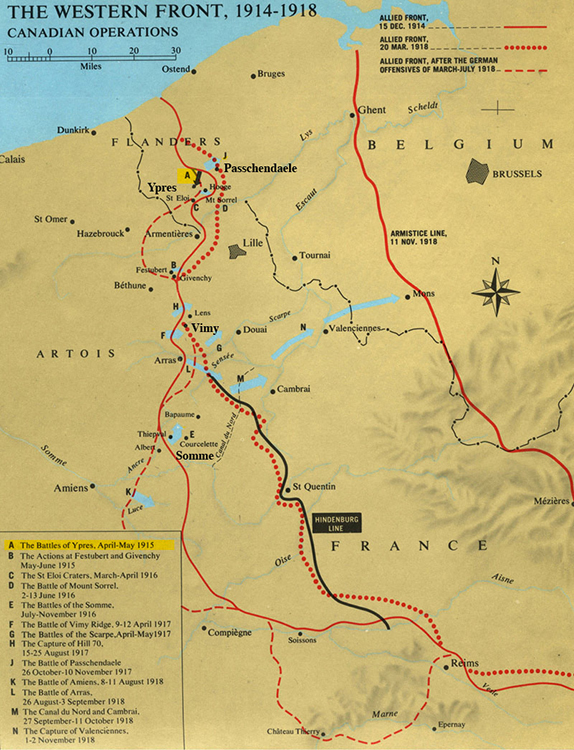
Reading
Read this article titled “The Second Battle of Ypres (Opens in new window)” from the Canadian War Museum. What are the facts and opinions that have been used in the sample data collection sheet?
Visuals
Take a look at these images from the Second Battle of Ypres. From what you see in these sources, what facts and opinions on the battle’s significance can you identify that have been added to the worksheet?
Audio
Go online and search for “audio the First World War Canada remembers gas.” You should find some short audio recordings about the Second Battle of Ypres. Listen to a recording. (If no audio recordings come up in your search, feel free to read or watch any other material that may have come up in your search.) From what you learn, what are the facts and opinions that have been used in the sample data collection sheet?
You can now begin your research on the three other battles.
The Battle of the Somme
Resource material on the Battle of the Somme
Conduct some research to develop your opinion on the historical significance of this battle.
Reading
Read this article titled “The Battle of the Somme (Opens in new window)” from the Canadian War Museum. As you read, think about the facts and opinions that make this battle significant. What are your thoughts on the historical significance of this battle? Enter the information you have gathered onto your data collection sheet “Why is this battle significant? (Opens in new window)”

Visuals
Take a look at these images from the Battle of the Somme. From what you see in these sources, what facts and opinions on the battle’s significance are you going to add to your data collection sheet?
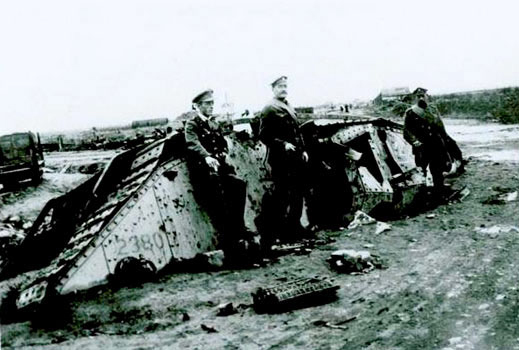
Disabled tank, George Metcalf Archival Collection, Canadian War Museum
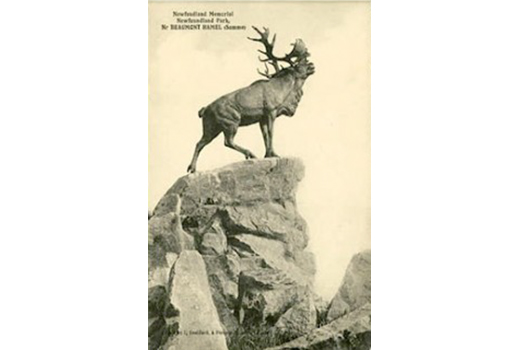
Photo of the memorial Caribou at Beaumont Hamel, George Metcalf Archival Collection, Canadian War Museum
Video
Go online and search for “video Canada and the Battle of the Somme.” You should find some short videos. Try to watch a video of less than 10 minutes which contains real footage or photos of the battle. Feel free to read or watch any other material that may have come up in your search. From what you learn, complete your notes on the battle’s historical significance on the data collection sheet that you’ve started.
The Battle of Vimy Ridge
Reading
Now read this article on the Battle of Vimy Ridge (Opens in new window) at the Canadian War Museum.
Visuals
Take a look at these images from the Battle of Vimy Ridge, adding any facts and opinions to those which you’ve already recorded on the data collection sheet regarding its historical significance.
Video
Go online and search for “video Canada and the Battle of Vimy Ridge.” You should find some short videos. Try to watch a video of less than 10 minutes which contains real footage or photos of the battle. Feel free to read or watch any other material that may have come up in your search. From what you learn, complete your notes on the battle’s historical significance on the data collection sheet that you’ve started.
The Battle of Passchendaele
Resource material on The Battle of Passchendaele
Conduct some research to develop your opinion on the historical significance of this battle.
Reading
Read this article titled “Passchendaele (Opens in new window)” from the Canadian War Museum. As you read, think about the facts and opinions that make this battle significant. What are your thoughts on the historical significance of this battle? Enter the information you have gathered onto your data collection sheet “Why is this battle significant? (Opens in new window)”

Visuals
Video
Go online and search for “video Canada and the Battle of Passchendaele.” You should find some short videos. Try to watch a video of less than 10 minutes which contains real footage or photos of the battle. Feel free to read or watch any other material that may have come up in your search. From what you learn, complete your notes on the battle’s historical significance on the data collection sheet that you’ve started.
Your opinion
Now that you have had a chance to learn about the four battles, how would you rank the historical significance of these battles?
Possible answer:
It’s difficult to rank these battles as they are all historically significant. If I had to decide though, I would probably put the Battle of Vimy Ridge as the most significant because it was an important victory,
an
“all-Canadian” battle, and a turning point in the war. Next, I would put the Second Battle of Ypres because the Canadian forces proved themselves able to face the unexpected and persist. The Battle of Passchendaele, near Ypres, was
another victory under Canadian leadership, although there were incredible losses. Finally, the long Battle of the Somme was also very significant because it seemed to point out all that could go wrong in trench warfare. Some difficult
lessons were learned.
Canada joined World War I on August 4, 1914, when Great Britain declared war on Germany. Canada was automatically pulled into the war as a dominion in the British Empire, but, during the war, Canadian forces fought as a distinct unit and made strong contributions on the Western Front in four critical battles.
Historically significant events can be those that result in great change over long periods of time and have an impact on a large number of people. However, historical significance also depends on one’s own perspective and purpose. When it comes to World War I, many Canadians believe our forces’ roles in these battles were significant, highlighted Canada as a nation in its own right, and made a difference to the overall outcome of the war.
Canada’s role in World War I is also linked to the overall history of Canada and with our progress toward equal status with other nations. Canada’s efforts and accomplishments in the war showed the world that Canada was an independent nation with its own identity, power, pride, and presence.


